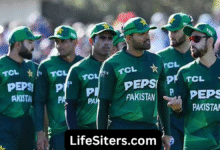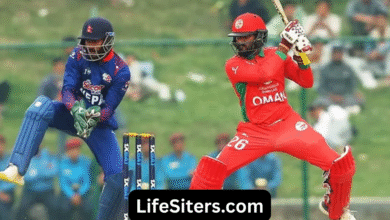India National Cricket Team vs Sri Lanka National Cricket Team Timeline

The Beginning of a South Asian Rivalry
India National Cricket Team vs Sri Lanka National Cricket Team Timeline The timeline of cricketing clashes between the India national cricket team and the Sri Lanka national cricket team dates back to the early 1980s. Although Sri Lanka became a full member of the International Cricket Council (ICC) in 1981, the two nations had interacted on cricketing grounds prior to that in unofficial matches. However, it was only after Sri Lanka’s Test status that this rivalry began taking a more structured and competitive shape. The initial years were dominated by India, as they had already been an established force in international cricket. Sri Lanka, on the other hand, was finding its footing on the global stage.
The Test Encounters and Growing Competitiveness
Test matches between India and Sri Lanka started becoming frequent by the late 1980s and early 1990s. Sri Lanka took some time to adapt to the longer format, but their home conditions often proved to be an advantage. Matches in Colombo and Galle India National Cricket Team vs Sri Lanka National Cricket Team Timeline developing a reputation for resilience and spin-heavy bowling attacks. India, with their own spinners and solid batting lineup, often countered these strengths, making for thrilling contests. Some of the most memorable Test matches were played in Sri Lanka where the hosts were able to challenge India’s dominance.
The 1997 Test match in Colombo became a historic moment in this timeline, as Sri Lanka posted a world-record team total of 952/6 declared, led by Sanath Jayasuriya’s monumental 340. This match showcased that Sri Lanka had evolved into a force to reckon with, especially at home. For India, such games were a lesson in endurance and adaptation. The balance of power in the Test format started to shift back and forth, and both teams shared periods of dominance over the years.
One-Day Internationals and High-Stakes Showdowns
The India vs Sri Lanka timeline in One-Day Internationals (ODIs) is marked by intense rivalries, especially in ICC tournaments and tri-nation series. During the 1990s and early 2000s, Sri Lanka’s rise in limited-overs cricket was rapid, punctuated by their World Cup victory in 1996. That win was especially notable because Sri Lanka knocked out India in the semifinal at Eden Gardens, a game remembered not only for its on-field events but also for the crowd disturbance that led to an early end.
Throughout the 2000s, the rivalry became more balanced. Both teams were involved in countless tri-series in the subcontinent, particularly in Sharjah and Dambulla. India’s batting prowess, led by stars like Sachin Tendulkar, Rahul Dravid, and Sourav Ganguly, met with the bowling skills of Sri Lanka’s Muttiah Muralitharan and Chaminda Vaas. The intensity increased when both teams met in tournament finals and ICC events. These matches weren’t just about winning; they were about national pride and supremacy in the region.
The T20 Format and New-Age Competitions
With the introduction of Twenty20 Internationals, the dynamic between the two sides entered a new era. The fast-paced nature of the format suited both countries, and their youthful squads adapted quickly. Sri Lanka’s strength in bowling and India’s aggressive batting made for electrifying contests. One of the biggest highlights in their T20 timeline was the ICC World T20 2014 final, where Sri Lanka defeated India to lift the trophy. This match was a moment of redemption for Sri Lanka, who had lost in several previous ICC finals.
In bilateral series, India continued to showcase dominance, especially on home turf. The emergence of players like Virat Kohli, Rohit Sharma, and Jasprit Bumrah helped India maintain an upper hand in the format. Sri Lanka, meanwhile, went through a transition phase with the retirement of legends like Mahela Jayawardene and Kumar Sangakkara. This affected their consistency in T20s, though they continued to challenge India with young talents from their domestic setup.
Key Players Who Defined the Rivalry
Several legendary players from both sides have shaped the timeline of India vs Sri Lanka cricket. For India, stalwarts like Sachin Tendulkar, MS Dhoni, Anil Kumble, and Virender Sehwag left indelible marks in key matches against Sri Lanka. MS Dhoni, in particular, was known for his ability to finish games under pressure and was instrumental in many victories over Sri Lanka across formats.
For Sri Lanka, names like Sanath Jayasuriya, Aravinda de Silva, Muttiah Muralitharan, and Tillakaratne Dilshan defined the contests. Muralitharan’s duels with Indian batsmen were especially intense and became a central feature of many India-Sri Lanka series. The respect shared between the two sides, even amid fierce competition, added a dignified edge to their encounters.
Major ICC Tournament Clashes
The India vs Sri Lanka timeline is significantly marked by their numerous encounters in ICC tournaments. Apart from the 1996 World Cup semifinal and 2014 T20 final, the 2011 ICC Cricket World Cup final remains a standout moment. Held in Mumbai, this match was symbolic in many ways. India won the World Cup after 28 years, with Gautam Gambhir and MS Dhoni playing key roles. The final also marked the end of an era for several Sri Lankan legends, who retired soon after.
Their matchups in Champions Trophy tournaments and Asia Cups also added to the narrative. India and Sri Lanka have contested numerous Asia Cup finals, trading victories across decades. These regional tournaments became platforms for showcasing dominance in the subcontinent, with fans from both nations passionately supporting their teams.
Changes in Team Composition Over the Years
Over the decades, both teams have undergone significant transformations. India moved from being reliant on a few key players to developing a deep bench strength. With the rise of the Indian Premier League (IPL), young Indian players gained exposure to high-pressure games early in their careers. This contributed to India’s depth and adaptability.
Sri Lanka, while known for producing world-class cricketers, faced challenges in rebuilding after the retirement of their golden generation. The post-2015 era saw Sri Lanka experimenting with numerous combinations, and while they have occasionally pulled off surprise victories, consistency has been an issue. Nonetheless, the emergence of players like Wanindu Hasaranga and Pathum Nissanka signals a promising future.
Modern-Day Series and Their Implications
In recent years, India has largely dominated bilateral series against Sri Lanka, especially at home. Despite this, Sri Lanka has managed to win important games, particularly in T20s. The contests are still rich in passion and anticipation, especially given the shared history and cricketing culture. The rivalry now includes not just traditional bilateral series, but also multi-format tours and even Women’s cricket where the two nations are developing competitive squads.
Modern cricket analytics, video reviews, and data-driven strategies have changed how teams prepare for matches. Both nations now invest heavily in sports science, fitness, and technology, adding new dimensions to their age-old rivalry.
The Cultural and Political Dimensions
India and Sri Lanka share deep-rooted historical, religious, and cultural connections. Cricket between the two has often mirrored the broader diplomatic relations. Tensions off the field have occasionally influenced public perception of matches. Yet, cricket has also served as a bridge between the two nations, providing moments of unity and sportsmanship. Joint initiatives by cricket boards, charity matches, and collaborative tours have reinforced this bond.
The Future of the Rivalry
As cricket continues to evolve, the rivalry between India and Sri Lanka remains a fixture of the sport. With increasing attention to formats like T20 leagues and Test Championship cycles, every India-Sri Lanka series carries new significance. Fans eagerly await fresh matchups, player rivalries, and memorable moments that add to this timeline.
Both teams are investing in grassroots development, ensuring that future encounters are filled with new stars ready to carry the legacy forward. Whether it is the swing of the red ball, the flair of limited-overs cricket, or the innovation of T20s, this rivalry is set to continue for decades to come.
Conclusion
The India national cricket team vs Sri Lanka national cricket team timeline is a story of evolution, rivalry, respect, and regional pride. From the early days of lopsided matches to intense modern-day clashes, the journey has been rich with narratives. The encounters have given cricket lovers across the globe some of the sport’s most iconic moments. As both teams move into a new era of cricket, their shared history remains a foundation upon which future glories will be built.
FAQs
What is the most famous match between India and Sri Lanka?
One of the most famous matches was the 2011 ICC Cricket World Cup final, where India defeated Sri Lanka to win the World Cup after 28 years. It was held at Wankhede Stadium in Mumbai.
Who has won more matches between India and Sri Lanka?
Historically, India has won more matches across all formats than Sri Lanka, especially in ODIs and T20Is. The gap has widened significantly in recent years due to India’s dominance.
When did India and Sri Lanka first play a Test match?
India and Sri Lanka played their first official Test match in 1982. The game marked the beginning of Sri Lanka’s journey as a Test nation.
Which player holds the record for the highest individual score in an India vs Sri Lanka Test match?
Sanath Jayasuriya holds the record with his score of 340 in the 1997 Colombo Test, helping Sri Lanka post a then-record team total of 952/6 declared.
Has Sri Lanka ever defeated India in an ICC final?
Yes, Sri Lanka defeated India in the final of the ICC World T20 in 2014. It was a significant win for Sri Lanka after several near-misses in global tournament finals.
Why is the India vs Sri Lanka cricket rivalry important?
The rivalry is important not just for cricketing reasons, but also due to the cultural, political, and historical ties between the two nations. It symbolizes regional competition and mutual respect on the sporting stage.
Are India and Sri Lanka rivals in women’s cricket too?
Yes, both countries have growing women’s cricket teams that have competed in international tournaments and bilateral series, contributing to the overall cricketing rivalry.
How does the IPL influence India-Sri Lanka matches?
The IPL has allowed players from both nations to play together, improving camaraderie. It has also given young Sri Lankan players exposure to top-level cricket, which helps in international fixtures.
What is the future of India vs Sri Lanka cricket?
With younger generations of cricketers emerging, the rivalry is poised to continue in exciting new ways, especially with growing attention on T20 leagues, Test Championships, and new ICC events.





